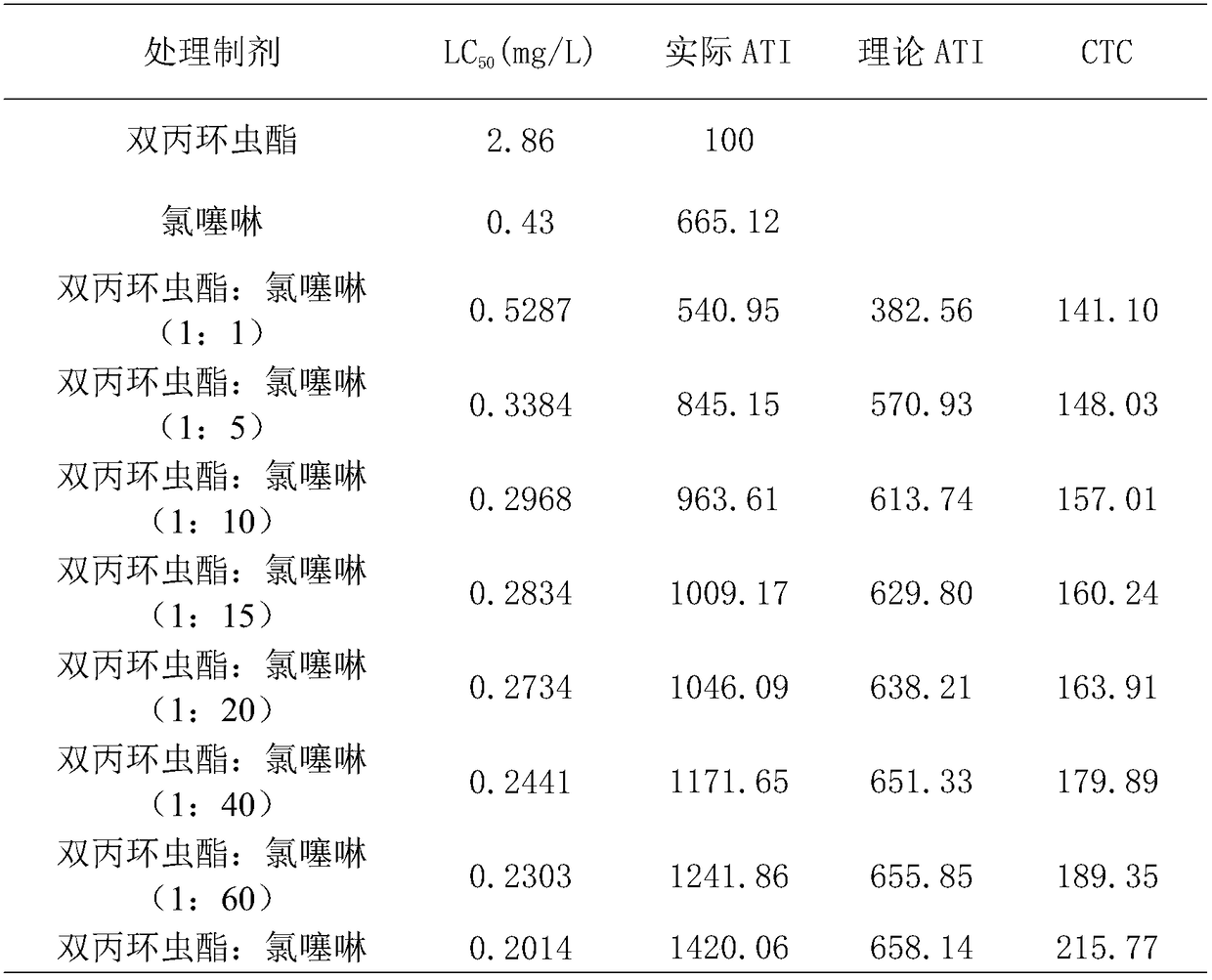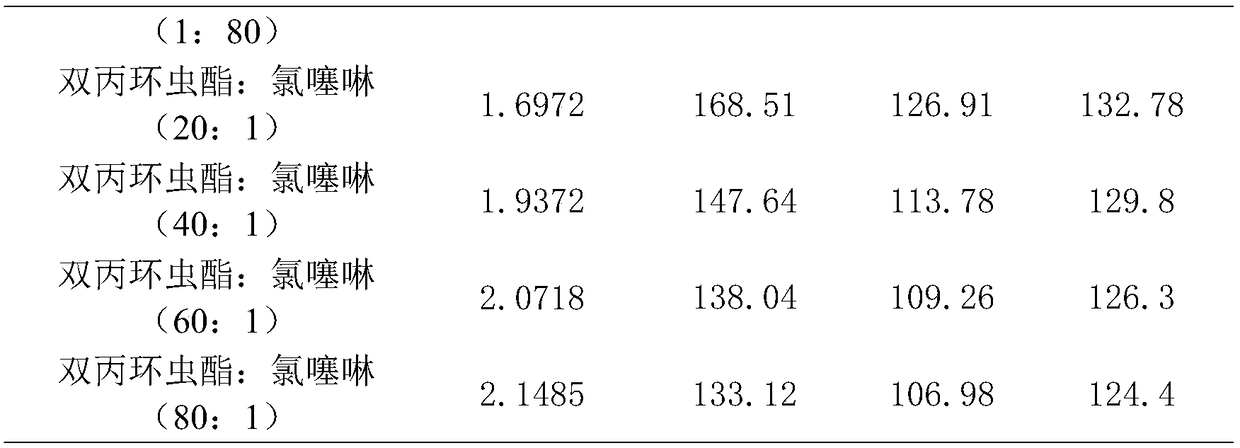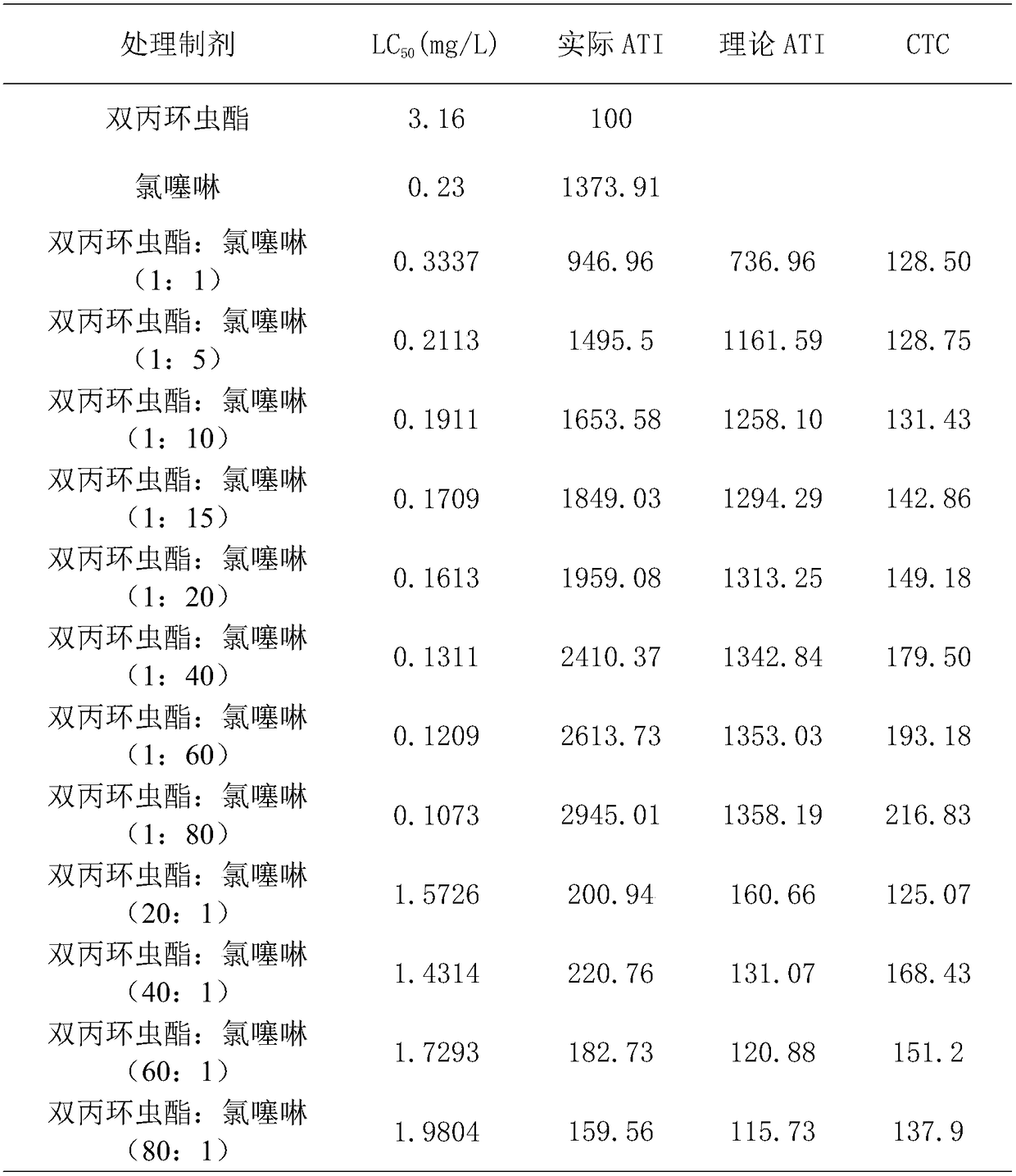Insecticide composition containing afidopyropen and imidaclothiz
A technology of dipropacyclopyrene and chlorothialine, applied in the field of pesticide application
- Summary
- Abstract
- Description
- Claims
- Application Information
AI Technical Summary
Problems solved by technology
Method used
Image
Examples
Embodiment 1
[0023] Example 1 Combined virulence assay for aphids.
[0024] Indoor virulence assay was carried out by soaking insects. The dipropacyclopyrene and clothialine original drugs were prepared into 5 serial concentrations of liquid medicines. The nymphs of wheat aphids (Macrosiphumavenae) cultivated in the room and of the same age were selected. After the target insects were immersed in the liquid medicine for 10 seconds, the excess liquid medicine was absorbed with filter paper, and the test insects were transferred to rearing under normal conditions. Each treatment was repeated 4 times. 10 insects, treated with clean water as a control. After 24 hours, check the number of dead and alive insects, and the test with a mortality rate of less than 20% in the control group is an effective test.
[0025] According to the survey results, the mortality rate of each treatment was calculated. Obtain the toxicity regression equation, lethal concentration, correlation coefficient, etc., ...
Embodiment 2
[0034] Example 2 Combined toxicity test to Bemisia tabaci and thrips.
[0035] The original drug is prepared into the required test agent, and the test method is the agar moisturizing leaf soaking method. Firstly, 5 different concentration gradients were set for the single agent and each mixed agent (on the basis of the preliminary test results, the mortality rate of the tested insects was set according to the proportional progression within the range of 5% to 90%). Bemisia tabaci were collected from the field in the greenhouse for test insects. Cucumber seedlings were used for 3 generations in the greenhouse, and uniform 3rd instar nymphs were selected for use. Use a hole puncher to punch fresh, flat host leaves into leaf discs, and try to avoid selecting parts with large and thick veins when punching. After immersing the leaf disk in the liquid to be tested for 10 seconds, take it out and dry it, and spread the leaf face down in the flat-bottomed glass tube that has been fi...
Embodiment 3
[0049] Example 3 20% Dipropacyclopyrene · Chlorthialine Water Dispersible Granules
[0050] 15% dipropacyclopyrene, 5% chlorothialine, 3% GY-D06, 4% sodium lignosulfonate, 3% pull open powder BX (sodium dibutylnaphthalene sulfonate), 4% K-12 ( sodium lauryl sulfate), light calcium added to 100% by weight. The above-mentioned raw materials are prepared through the conventional method for preparing water-dispersible granules, that is, the steps of mixing ultrafine airflow pulverization, mixing, and granulating to prepare 20% dipropacyclopyrene·clothialine water-dispersible granules.
PUM
 Login to View More
Login to View More Abstract
Description
Claims
Application Information
 Login to View More
Login to View More - R&D
- Intellectual Property
- Life Sciences
- Materials
- Tech Scout
- Unparalleled Data Quality
- Higher Quality Content
- 60% Fewer Hallucinations
Browse by: Latest US Patents, China's latest patents, Technical Efficacy Thesaurus, Application Domain, Technology Topic, Popular Technical Reports.
© 2025 PatSnap. All rights reserved.Legal|Privacy policy|Modern Slavery Act Transparency Statement|Sitemap|About US| Contact US: help@patsnap.com



